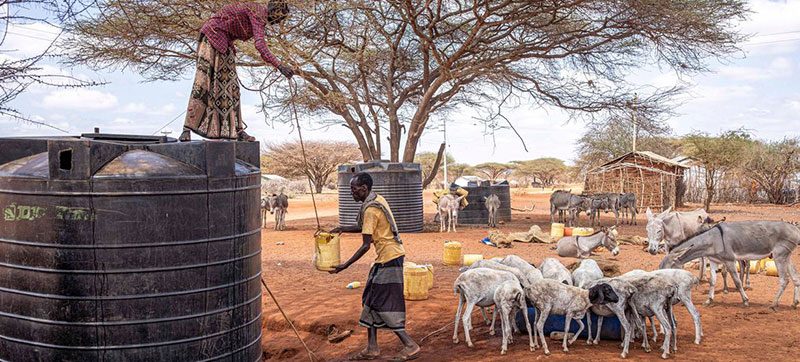 Horn Of Africa
Horn Of Africa New York: More than $138 million is needed to assist rural communities affected by extended drought in the Horn of Africa, the UN Food and Agriculture Organization (FAO) said on Monday, launching a comprehensive response plan for the region.
A third consecutive year of poor rains is posing a major threat to food security in countries already facing natural resource limitations and conflict, the COVID-19 pandemic, and locust invasions during 2020-21.
FAO fears that a large-scale hunger crisis could break out if food-producing rural communities do not receive adequate assistance timed to the needs of the upcoming agricultural seasons.
Millions at risk
The bulk of the funding under the FAO Horn of Africa Drought Response Plan, $130 million, is urgently needed by the end of February, to provide critical assistance to highly-vulnerable communities in the three most impacted countries: Ethiopia, Kenya and Somalia
Projections indicate that some 25.3 million people will face “high acute food insecurity” by the middle of the year.
Should the scenario materialize, FAO said it would place the Horn of Africa among the world’s largest-scale food crises.
Now is the time
"We know from experience that supporting agriculture at moments like this is hugely impactful – that when we act fast and at the right moment to get water, seeds, animal feed, veterinary care, and much needed cash to at-risk rural families, then hunger catastrophes can be averted," said Rein Paulsen, the agency’s Director of Emergencies and Resilience.
“Well, the right moment is now. We urgently need to support pastoralists and farms in the Horn, immediately, because the cycle of the seasons waits for no one.”
Paulsen warned that the clock is already ticking as the lean season, which just started, has been marked by limited grazing opportunities for pastoralist families whose livestock will need nutritional and veterinary support.
Meanwhile, families who rely on producing crops will need seeds and other supplies in time for the Gu planting season that begins in March.
Water and seeds
The FAO plan targets 1.5 million of the most at-risk rural populations in Ethiopia, Kenya and Somalia.
For pastoralist families, support will include providing animal feed and nutritional supplements, as well as mobile veterinary health clinics, to keep their livestock healthy and producing milk; transporting water to 10,000 litre collapsible water reservoirs set up in remote areas, and upgrading existing wells to run on solar power.
Crop-reliant families will receive seeds of drought-tolerant early-maturing varieties of sorghum, maize, cowpea and mung bean, and nutrient-dense vegetables. The UN agency also aims to arrange for pre-planting land-ploughing services and access to irrigation, as well as training on good agricultural practices.
Extra income
Cash for work programmes would allow able-bodied households to earn extra income by helping to rehabilitate irrigation canals, boreholes or other agricultural infrastructure.
Those not able to work due to health or other reasons will receive “unconditional infusions of cash”. FAO said that providing rural families with extra disposable income gives them the means to buy food at market while they wait for their harvests to come in.
In Somalia, the FAO plan calls for the provision of boats, equipment and training to help coastal communities who do not typically fish, to secure a new and much-needed source of nutrition, building on existing programmes to promote the diversification of livelihoods in the country.
FAO said if fully funded, the plan would allow for the production of up to 90 million litres of milk and up to 40,000 tonnes of staple food crops in the first part of 2022, putting over one million highly food insecure people on a safe footing, for at least six months.
Support Our Journalism
We cannot do without you.. your contribution supports unbiased journalism
IBNS is not driven by any ism- not wokeism, not racism, not skewed secularism, not hyper right-wing or left liberal ideals, nor by any hardline religious beliefs or hyper nationalism. We want to serve you good old objective news, as they are. We do not judge or preach. We let people decide for themselves. We only try to present factual and well-sourced news.







